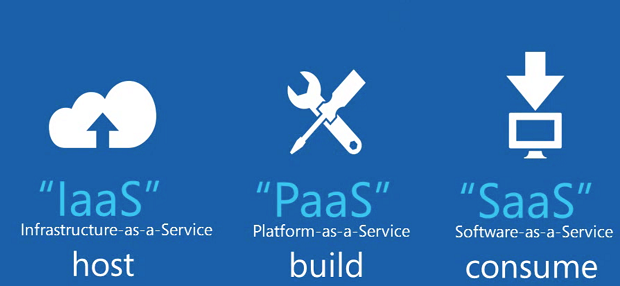The Idea Behind Infrastructure-as-a-Service, or IaaS
If you are using Internet, then you are already enjoying the benefits of someone else’s IT infrastructure. There are massive interconnected pieces of IT infrastructure that work silently in the background to serve your requests over the Internet. The content you are reading now, the video you watched a little while ago, the mobile app you downloaded – were all created by someone, stored in their servers, processed and delivered to you once you sent the request to do so.
Before third party managed IT infrastructure services came into existence, every company around the world was setting up and managing its own IT infrastructure. Take Google for example: the company archives every piece of information it finds on the Internet, ranks the sources and, once you enter your query into the Google search box, it brings the best possible results for you to see.
That is made possible – usually in a fraction of a second – because Google stores all that information in its servers located all over the world, crunches the data and delivers the results over the internet. Google Search is only possible because there is a massive IT infrastructure that is working behind the scenes to bring the right information to your screen.
Now imagine this: What if Google turns around and says “hey, we already manage massive IT infrastructure and we use the best hardware and software available, so why not allow outsiders to come and make use of our expertise in managing IT infrastructure for their own benefit, but at a price much lower than if they were to invest in the infrastructure themselves?”
It is exactly that type of thinking that gave birth to what is now known as Infrastructure-as-a-Service, or IaaS.
What are the Components of IaaS?
The three major building blocks of IaaS are Servers, Storage and Network.
Everything else that goes into building an infrastructure service are simply layers built over these three to bring efficiency, scalability, access to applications and other benefits to the table.
Simply put, the building blocks of IaaS are very similar to the building blocks of the personal computer you own. When you buy a PC, the first three things you tend to look at are how fast it is (RAM and Processor), how much storage it has (HDD capacity) and how you can connect to a larger network (Ports.)
Cloud infrastructure is pretty much designed the same way. Compute power, storage space and networking efficiency are the cornerstones of providing IaaS.
Why is IaaS Preferred Over Self-owned Infrastructure?
Companies that offer IaaS build things at a scale running into millions of physical servers providing massive amounts of storage capacity and compute power through a network of data centers spread all over the world.
This brings instant computing infrastructure to anyone’s fingertips, allowing them to provision and manage their hired infrastructure with ease over the Internet. Due to the massive size of the already-built infrastructure, you can quickly scale up or scale down your own capacity, do it as and when you need it, do it in minutes and pay only for what you use.
The alternative to that is investing hundreds of thousands of dollars to hundreds of millions, depending on the capacity your business needs. It also brings HR and Finance nightmares with respect to hiring and maintaining highly paid IT talent. Additionally, it isn’t scalable at a moment’s notice the way cloud IaaS is. Moreover, if you want to scale down your capacity, it won’t necessarily cost you any less to run your IT operations.
All these and several other factors make IaaS the ideal solution for any business from a fledgling startup to a multinational enterprise. There are different IaaS models to suit each business’s needs, as well as other layers on top of cloud infrastructure, and we’ve explained all that in another article, linked below.
Cloud Computing 101: The What, How and Why of Cloud
Thanks for reading our work! We invite you to check out our Essentials of Cloud Computing page, which covers the basics of cloud computing, its components, various deployment models, historical, current and forecast data for the cloud computing industry, and even a glossary of cloud computing terms.



